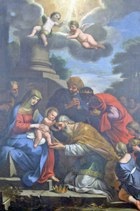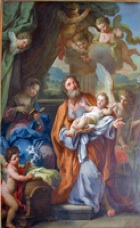

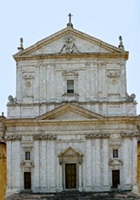
The Oratorian Fathers established a community in Spoleto soon after the canonisation of their founder, St Philip Neri in 1622. Their first residence was at San Sabinuccio (see Walk I).
The Oratorians acquired this site in 1640 and built the present church, which was designed by Loreto Scelli.
-
✴The nave of the church was complete by 1653 and the cupola was built in ca. 1671.
-
✴Work began on the new convent behind the church in ca. 1670.
The community was suppressed in 1860.
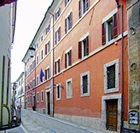
The church, which has undergone a long period of restoration, reopened in 2014.
Church
The travertine marble facade of the church is inspired by Roman models.
The four columns of green porphyry in the left transept came from the Tempietto di Clitunno.
[More]
The church is currently in restoration (January 2008).
Santuario del Beato Pietro Bonilli
The Blessed Peter Bonilli, who died in Spoleto in 1935, and was buried in San Filippo Neri, in a chapel known as the Santuario del Beato Pietro Bonilli. The process for his beatification was opened in 1944, and he was beatified in 1988. Following the earthquake of 1997, his relics were translated to a chapel in his original parish church of San Michele Arcangelo, Cannaiola, near. This is now known as the Santuario del Beato Pietro Bonilli.
St Francis of Sales Crushes Heresy (17th century)
This panel in [the left transept] is attributed to Francesco Refini.
Works by/attributed to Gaetano Lapis
Two altarpieces (18th century) in the church are by/attributed to Gaetano Lapis:
-
✴the presentation of the Virgin, on the 2nd altar on the right; and
-
✴the Crucifixion, on the altar of the right transept.
Art from the Church
St Philip Neri (ca. 1640)
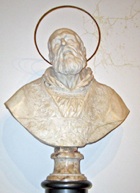
Holy Family (ca. 1735)
Descent of the Holy Spirit (ca. 1680)
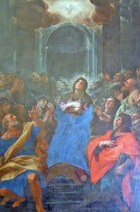
Adoration of the Magi (17th century)
